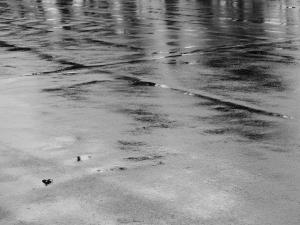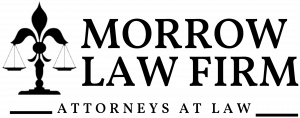...public sidewalks are typically maintained by municipal or parish governments, property owners may be held responsible for certain hazards...”
OPELOUSAS, LA, UNITED STATES, January 31, 2025 /EINPresswire.com/ -- Icy and wet sidewalks can create hazardous conditions that lead to serious injuries. In Louisiana, property owners have legal responsibilities regarding the maintenance and safety of sidewalks adjacent to their property. Understanding these responsibilities is essential for both property owners and pedestrians to prevent accidents and address liability concerns. William P. Morrow, a lawyer at Morrow Law Firm in Opelousas, Louisiana, explains the legal framework surrounding these issues.— William P. Morrow
Premises Liability and Sidewalk Safety
Premises liability laws in Louisiana establish the duty of property owners to maintain safe conditions on their property, which can extend to sidewalks under certain circumstances. "Although public sidewalks are typically maintained by municipal or parish governments, property owners may be held responsible for certain hazards, especially when an unsafe condition originates from their property," adds Morrow.
When sidewalks become icy, wet, or otherwise hazardous due to weather conditions, property owners may be required to take reasonable steps to mitigate the danger. This can include actions such as clearing ice, removing debris, or addressing drainage issues that contribute to hazardous conditions.
Liability for Injuries on Icy or Wet Sidewalks
If a pedestrian slips and falls due to ice or water accumulation, determining liability depends on several factors:
Who Maintains the Sidewalk: In many cases, municipal governments are responsible for sidewalk maintenance. However, if a property owner’s actions contribute to hazardous conditions—such as directing water runoff onto the sidewalk that later freezes—they may be liable for resulting injuries.
Whether the Condition Was Foreseeable: Liability often hinges on whether a property owner knew or should have known about a hazardous condition and failed to take reasonable steps to address it.
Comparative Fault: Louisiana follows a comparative fault system, meaning that if a pedestrian fails to exercise reasonable caution, their ability to recover damages may be reduced based on their level of responsibility in the accident.
Weather Conditions and Property Owner Responsibilities
In Louisiana, ice and snow are less common than in northern states, but heavy rainfall and occasional freezing conditions can create significant hazards. Property owners should be aware of how water accumulates on or near sidewalks, particularly in cases where drainage issues cause water to pool and freeze during cold weather.
Regular maintenance, such as keeping sidewalks free of obstructions and ensuring proper drainage, can help reduce liability risks. In some municipalities, local ordinances require property owners to address certain sidewalk conditions, making it important for owners to understand their specific obligations.
Legal Defenses for Property Owners
Property owners facing liability claims for icy or wet sidewalks may raise certain legal defenses, including:
Lack of Knowledge: If the hazardous condition developed suddenly and the owner had no reasonable opportunity to address it, liability may be reduced.
Unavoidable Natural Conditions: If ice accumulation was due to an unforeseen weather event, owners may not be held responsible if reasonable actions could not have prevented the hazard.
Pedestrian Negligence: If a pedestrian was distracted, wearing inappropriate footwear, or disregarding clear warnings about hazardous conditions, their own negligence may limit or eliminate property owner liability.
Municipal Responsibility vs. Private Property Responsibility
Public sidewalks are generally maintained by city or parish governments, but there are circumstances where property owners may have additional obligations. If a municipality is responsible for sidewalk maintenance, injury claims may need to be filed against the local government, which often involves specific procedural requirements and deadlines.
When a property owner directly contributes to a dangerous condition—such as failing to repair a broken drainage system that causes water to pool and freeze—their liability can increase. Property owners leasing space to businesses should also review lease agreements, as tenants may have maintenance responsibilities under their contracts.
Steps to Minimize Liability Risks
Property owners can take several measures to reduce the risk of liability for icy or wet sidewalks:
Routine Inspections: Regularly check sidewalks for water accumulation, ice formation, or structural issues that could create hazards.
Proper Drainage Management: Ensure that gutters, downspouts, and drainage systems direct water away from sidewalks to prevent pooling and freezing.
Clear Walkways Promptly: When feasible, clear ice or standing water from sidewalks as quickly as possible to minimize risks.
Use Warning Signs: If immediate removal of a hazard is not possible, placing warning signs can help alert pedestrians to potential dangers.
Understand Local Ordinances: Be aware of any municipal regulations that outline specific maintenance responsibilities for adjacent sidewalks.
Legal Considerations for Injured Pedestrians
Pedestrians injured on icy or wet sidewalks may seek compensation for medical expenses, lost wages, and other damages. Claims can be pursued against property owners or municipal entities, depending on the circumstances. Prompt documentation of the accident, including photographs of the hazard and witness statements, can strengthen a claim.
Individuals who sustain injuries should seek legal advice to determine the appropriate course of action. Premises liability cases often depend on evidence showing that the property owner knew or should have known about the hazardous condition and failed to take reasonable steps to address it.
Conclusion
The legal responsibilities of property owners for icy or wet sidewalks in Louisiana depend on factors such as municipal maintenance obligations, foreseeability of hazards, and the actions taken to prevent dangerous conditions. Understanding these responsibilities can help both property owners and pedestrians navigate liability concerns and reduce the risk of accidents.
About Morrow Law Firm
Morrow Law Firm, based in Opelousas, Louisiana, represents individuals in matters related to injury claims and legal liability. The firm is led by William P. Morrow, John Michael Morrow, Jr., and Stephen M. Morrow, providing legal services across the region.
Morgan Thomas
Rhino Digital, LLC
+1 504-875-5036
email us here
Visit us on social media:
Facebook
Legal Disclaimer:
EIN Presswire provides this news content "as is" without warranty of any kind. We do not accept any responsibility or liability for the accuracy, content, images, videos, licenses, completeness, legality, or reliability of the information contained in this article. If you have any complaints or copyright issues related to this article, kindly contact the author above.



